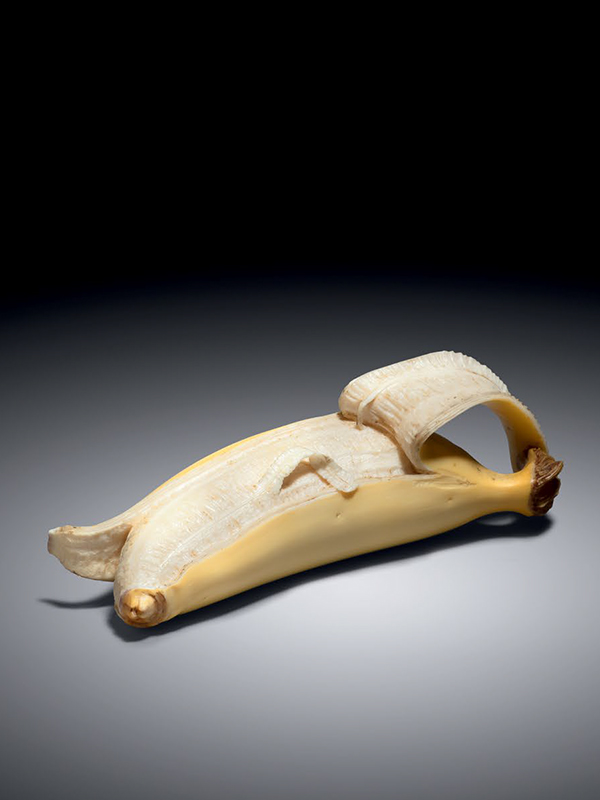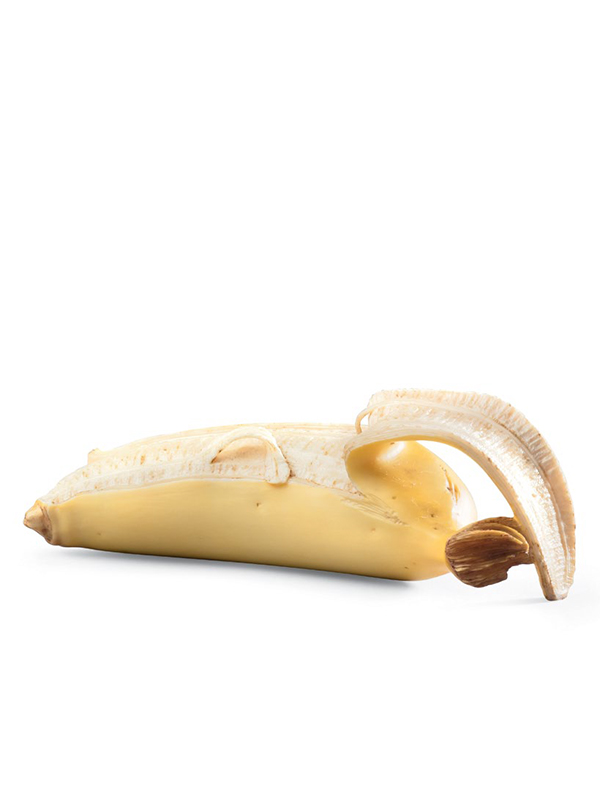Ivory okimono of a half-peeled banana
Japan, Meiji period, 1868 - 1912
An ivory okimono, naturalistically carved to represent a half-peeled banana. Where the skin is peeled away, the curved fruit reveals its creamy white flesh of soft, velvet texture. The skin is smooth and well polished and stained a pale yellow tone.
[No longer available]
The term okimono in Japanese literally means “object for placement [on display]”. Hyper-realistic ‘trompe-l’oeil’ ivory carvings of fruit, in the form of tangerines and bananas were very popular in Japan during the Meiji period. A closely comparable ivory carving of a banana, dated to c. 1900 and described as Chinese but probably made in Japan, is in the Kwan collection.1 Another similar ivory banana comparable in size and detail, also dated to c. 1900 and made in Japan, is in the collection of the British Museum.2
- Kao, Mayching (ed.) Chinese ivories from the Kwan Collection, Art Gallery of the Chinese University of Hong Kong, 1990, no. 158, pp. 312-3
- British Museum online collection archive, registration number: 1979,0412.1


